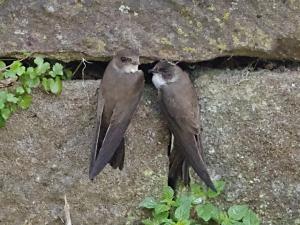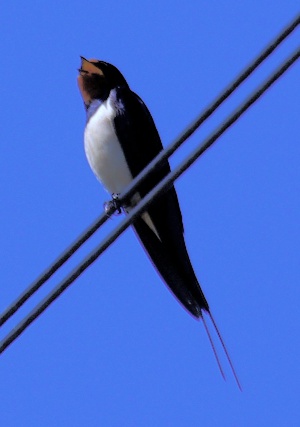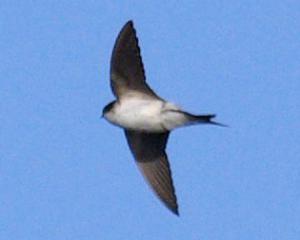


The Sand Martin is a common summer visitor to Nottinghamshire, although in the 1970s numbers were very low, but a slow recovery has taken place since. Sterland in the "Descriptive list of the birds of Nottinghamshire {1879}" thought it common in the sandy areas of Nottinghamshire, but non–existent in the clay areas.
It is an early arriver, usually in late March, with the numbers building up rapidly in early April, dependant on the weather. In Nottinghamshire one of the largest colonies at Hoveringham has disappeared with the end of gravel extraction there. Large colonies still exist in Langford Lowlands, Cottam power station and Collingham. They also breed in some interesting places such as in the gaps in a stone wall underneath a canal tow-path at Beeston and in a road bridge at Dunkirk.

The Swallow is a common summer visitor to Nottinghamshire, according to the Breeding Bird Survey {2008} the Swallow population has increased by 30% in the years 1995–2007. Usually it arrives just after the Sand Martin in spring and remains longer in the autumn, although the later birds are more likely to be passage birds from the north than local breeders. It has one of the longest migration routes of any Nottinghamshire bird, wintering in either the Transvaal or the Cape Province in South Africa.
Called the Chimney Swallow by Sterland in the "Descriptive list of the birds of Nottinghamshire {1879}" in which he stated ‘widely and abundantly distributed throughout the county, but I have fancied of late years that it is not so plentiful as it used to be.’
In Nottinghamshire it is 100% dependant on buildings for nesting. It can be found anywhere in Nottinghamshire except perhaps in the centre of the larger towns.

The House Martin, like the Swallow, is a common summer visitor to Nottinghamshire, numbers have remained steady in England between the years 1995–2007 (Breeding Bird Survey {2008}). Sterland in the "Descriptive list of the birds of Nottinghamshire {1879}" considered that the House Martin's numbers had fallen in the mid–nineteenth century.
Arrives later than the Swallow and the Sand Martin, the main arrival not being until May, but generally departs later than either of the other two species, especially if they have a second brood.
In Nottinghamshire it depends on buildings for breeding, most of the colonies it forms are small and are often near water or farmyards.
Any criticisms, corrections or comments to the author Derek Huskisson

This work is licensed under a Creative Commons Attribution-Noncommercial-Share Alike 2.0 UK: England & Wales License.